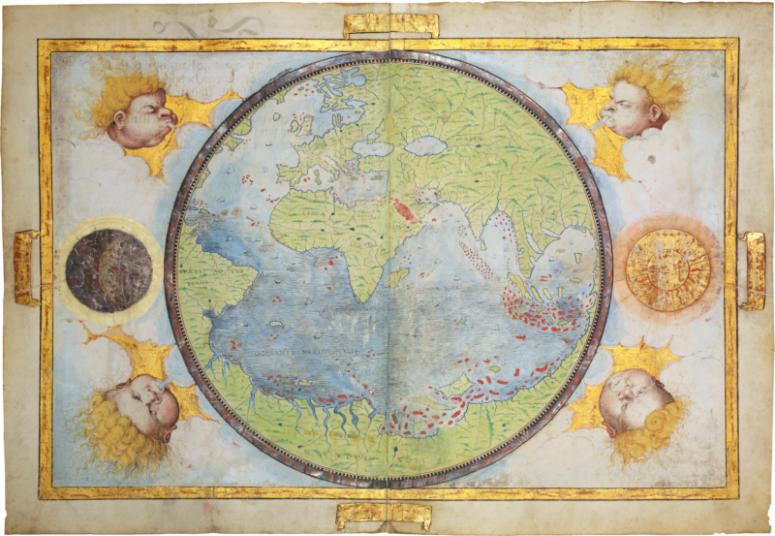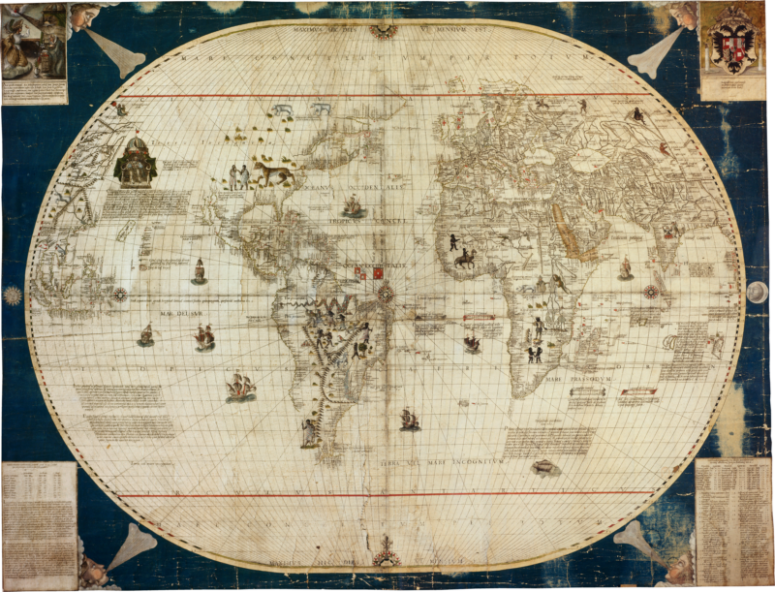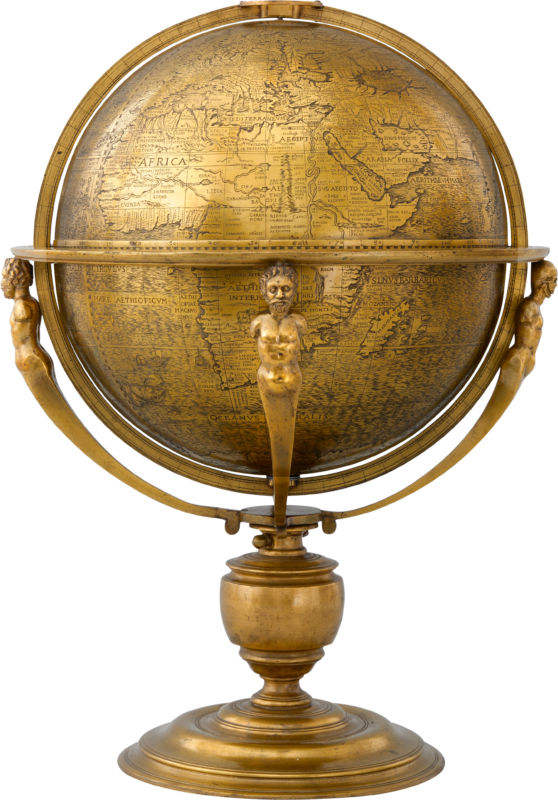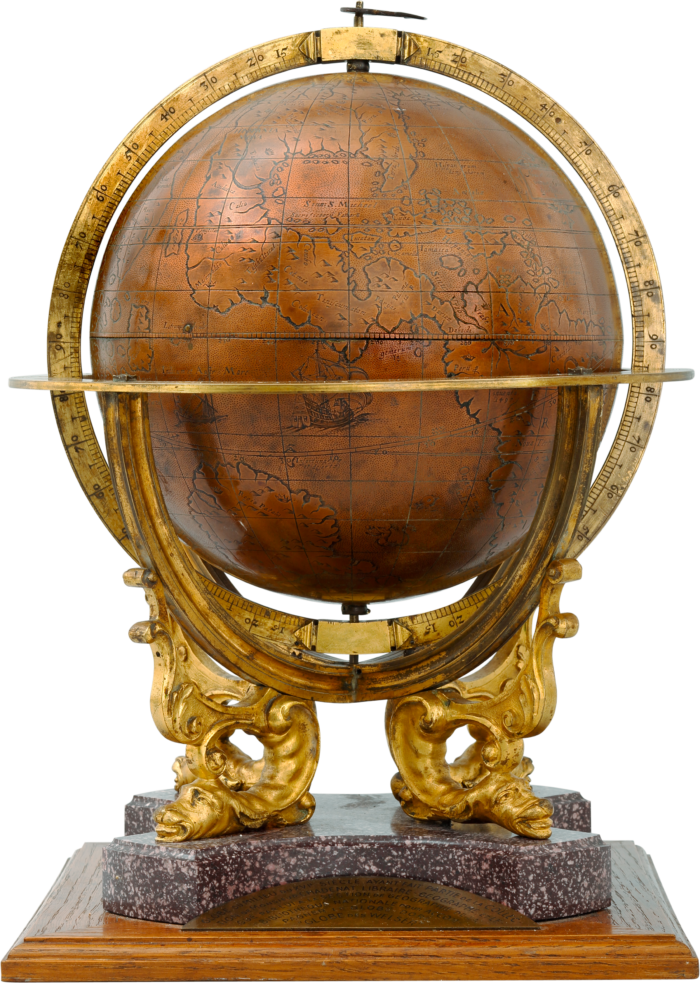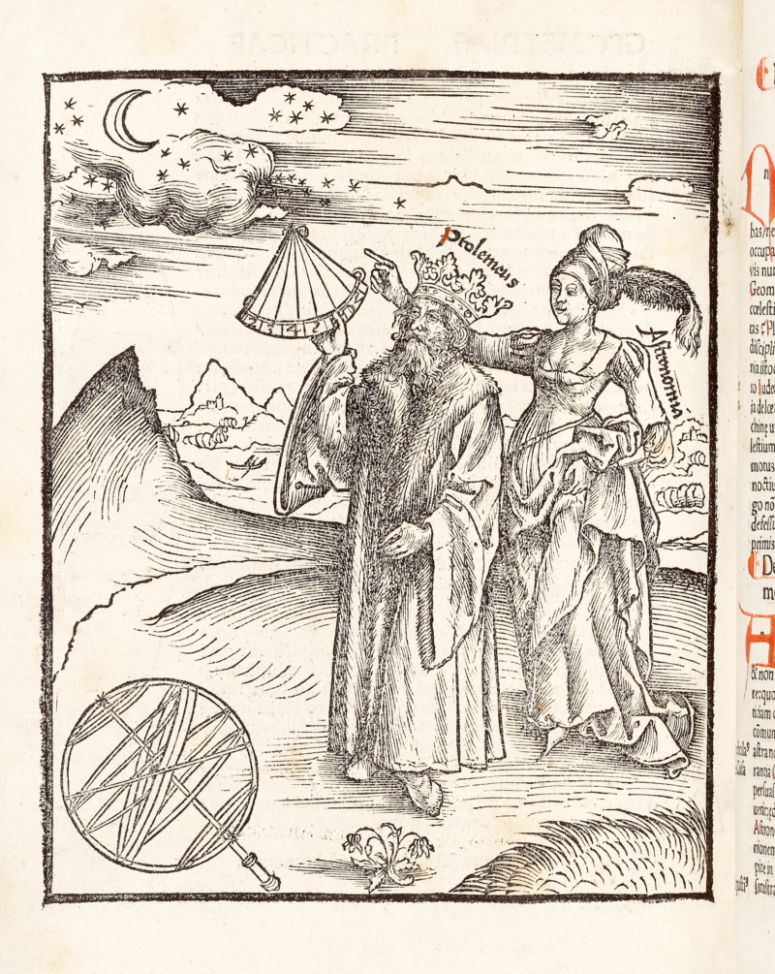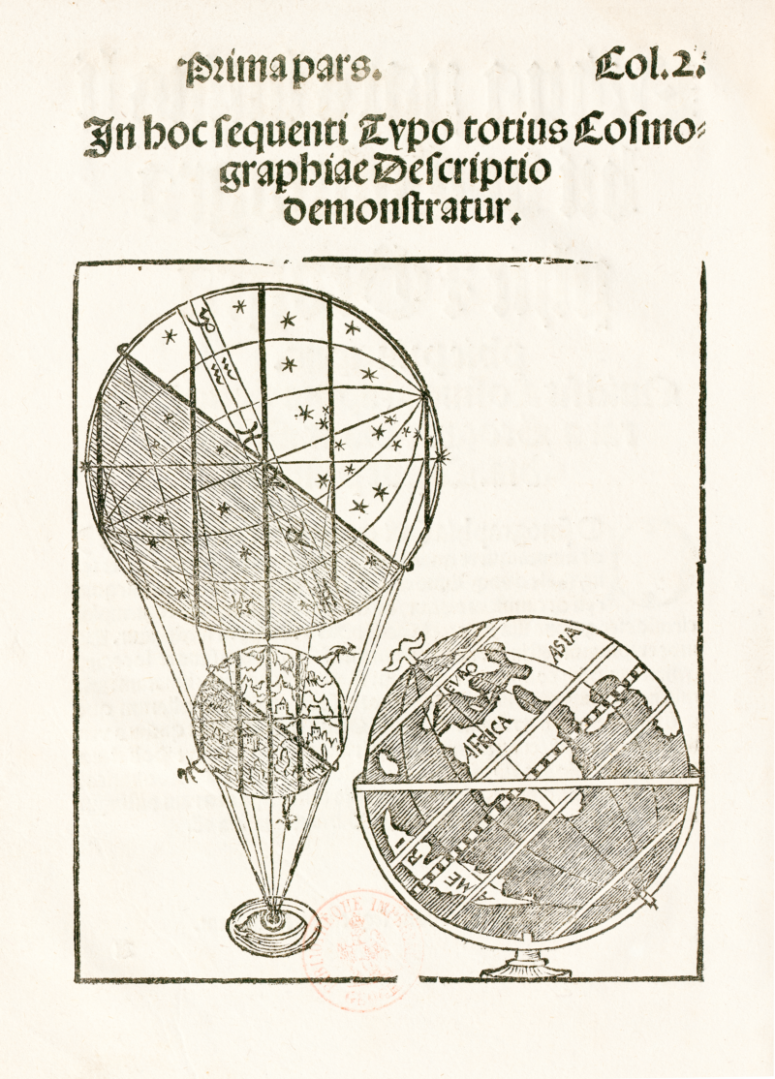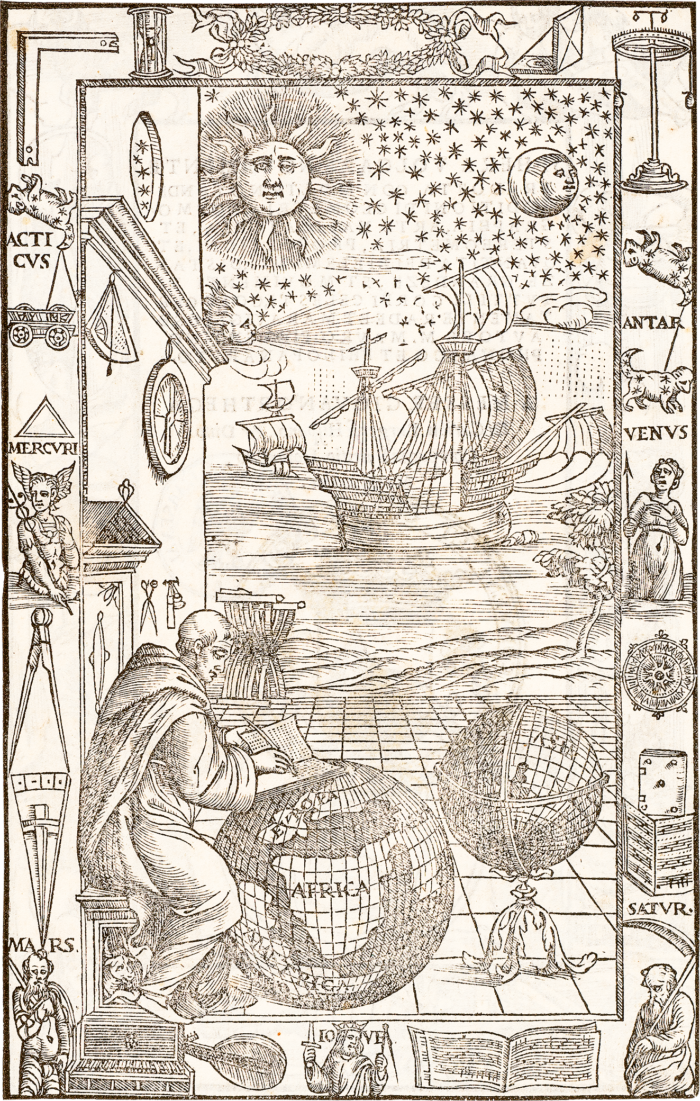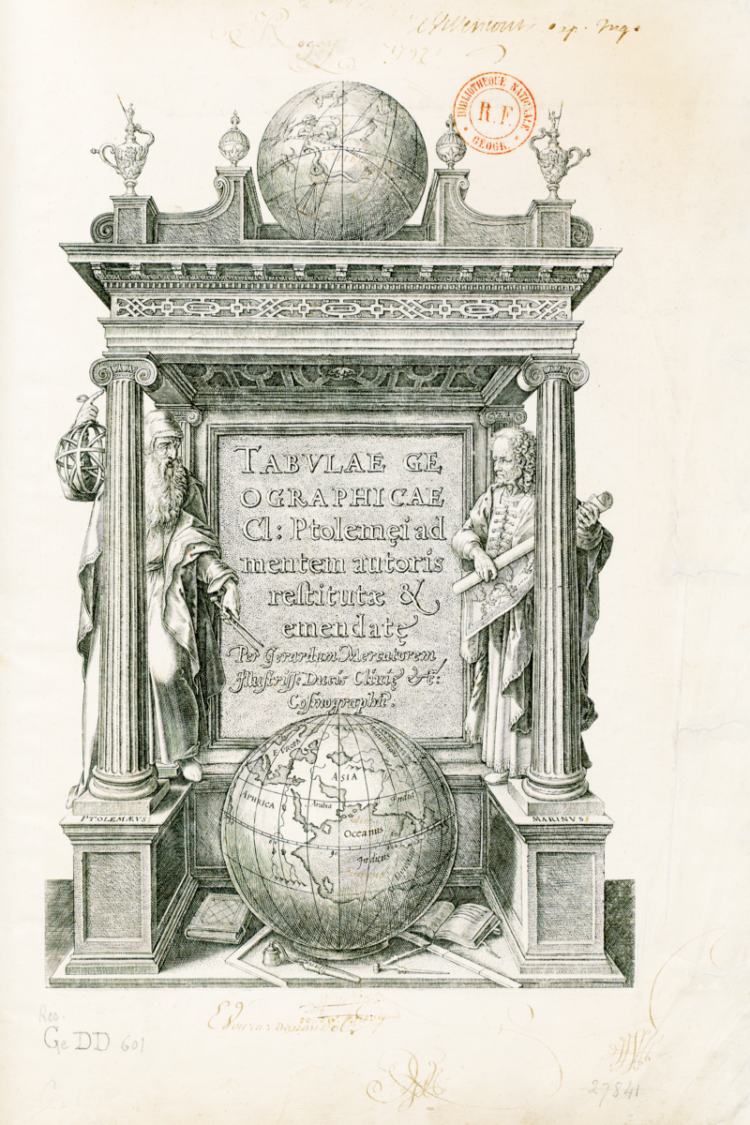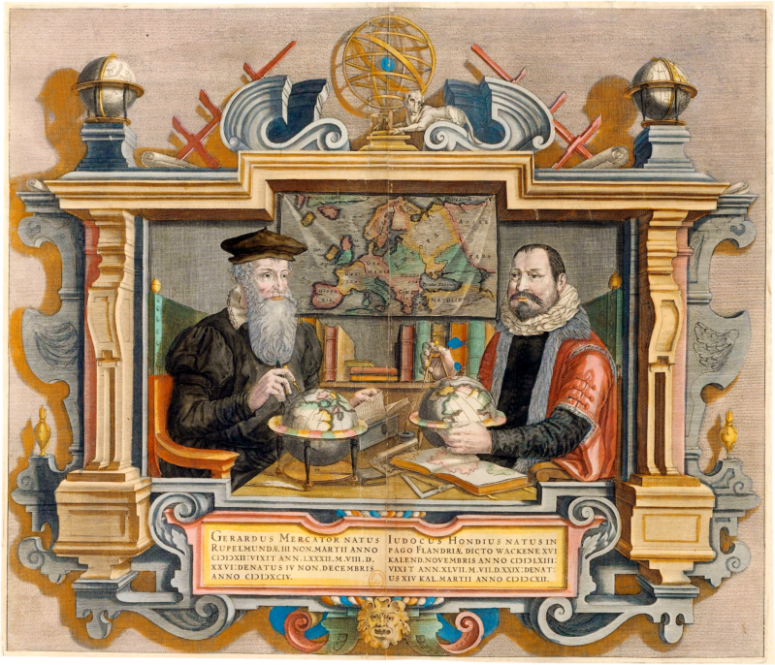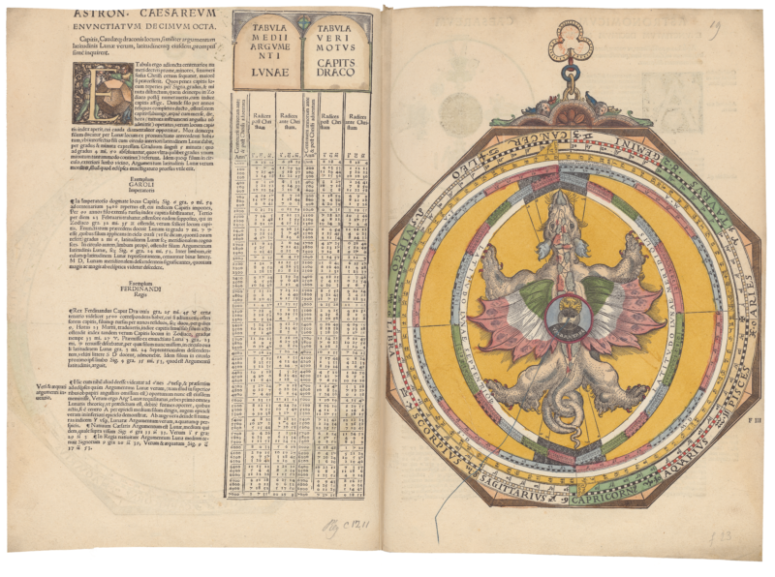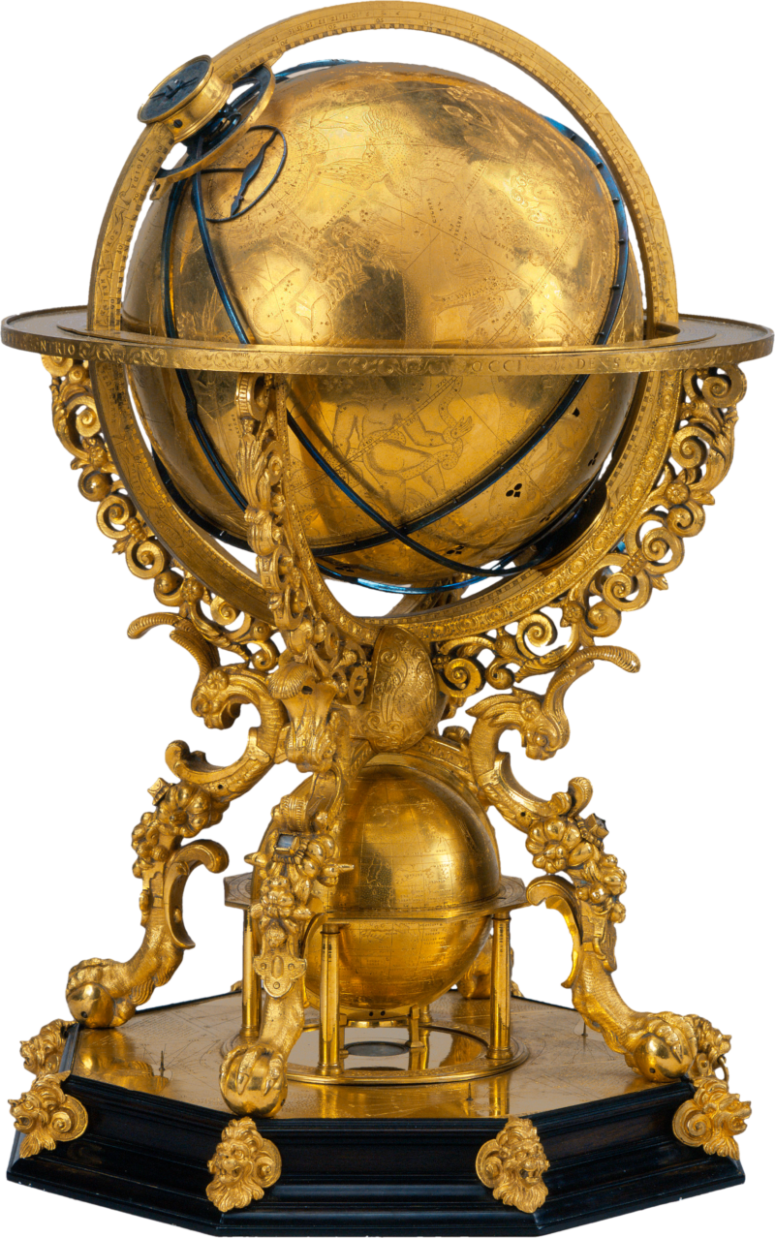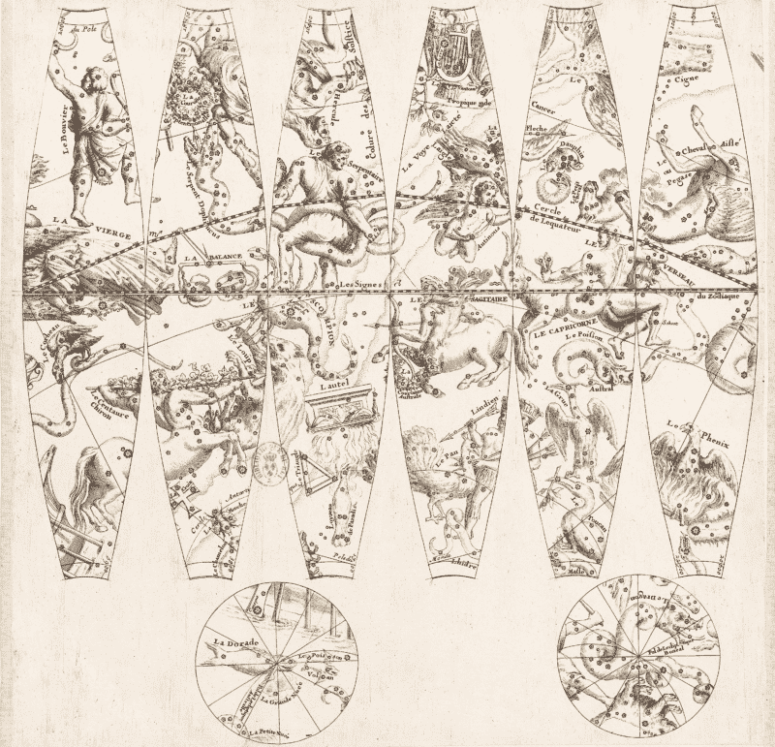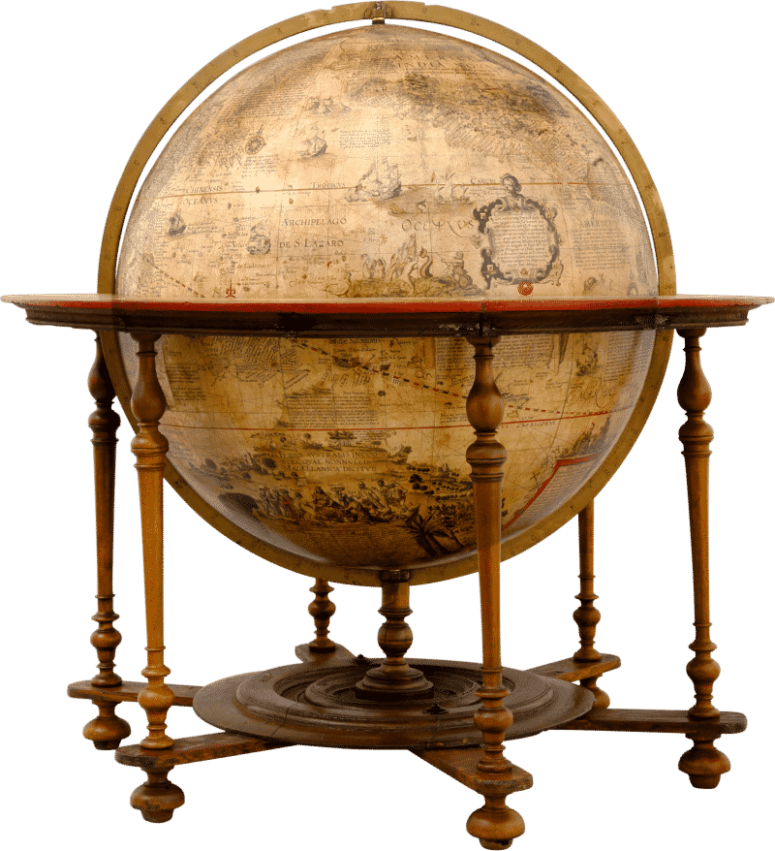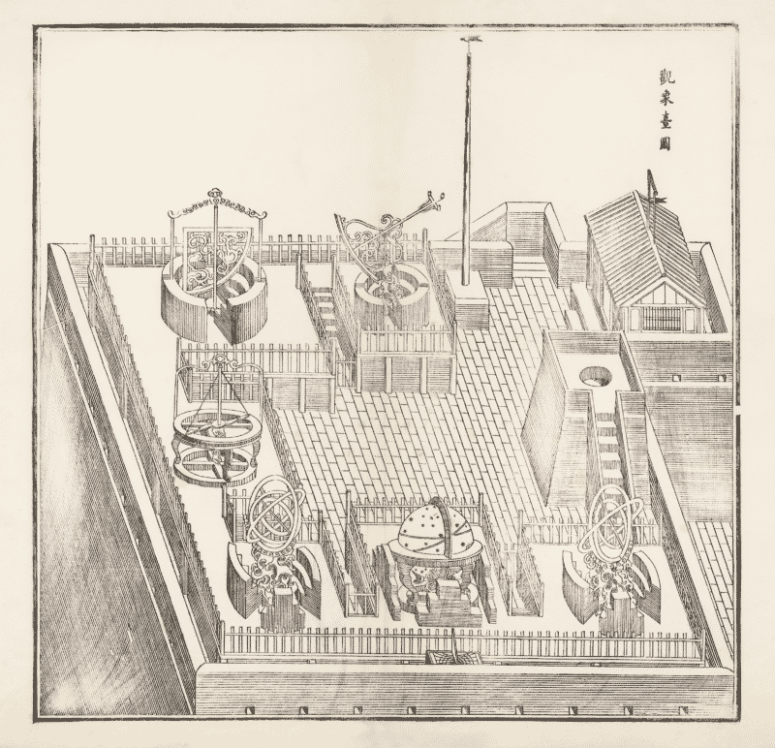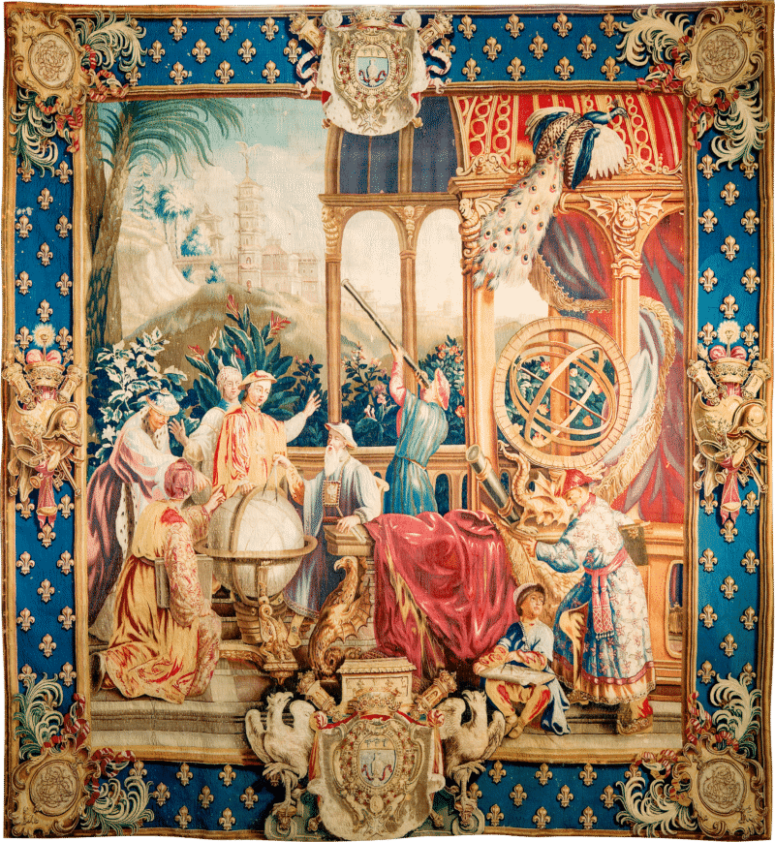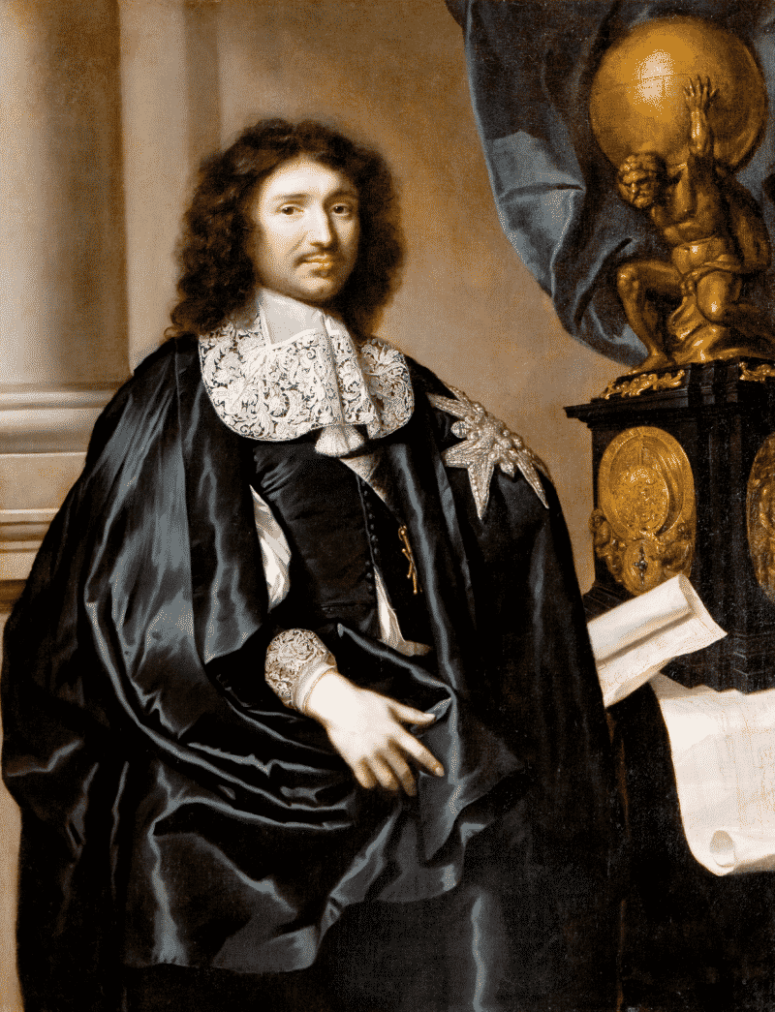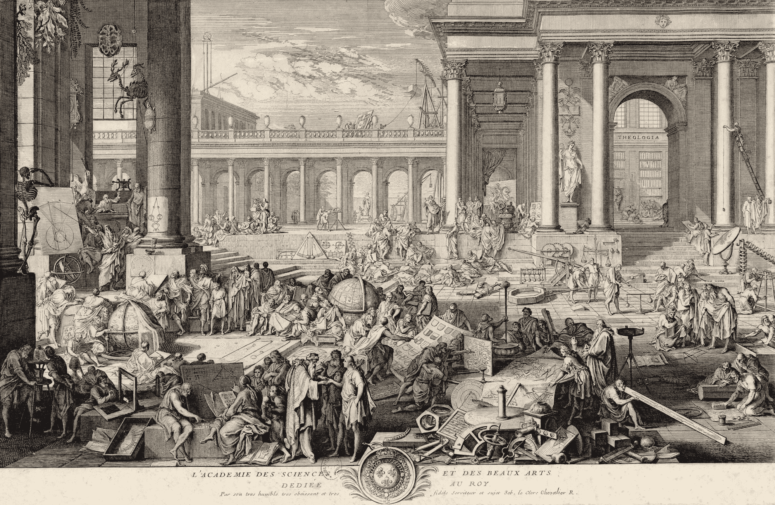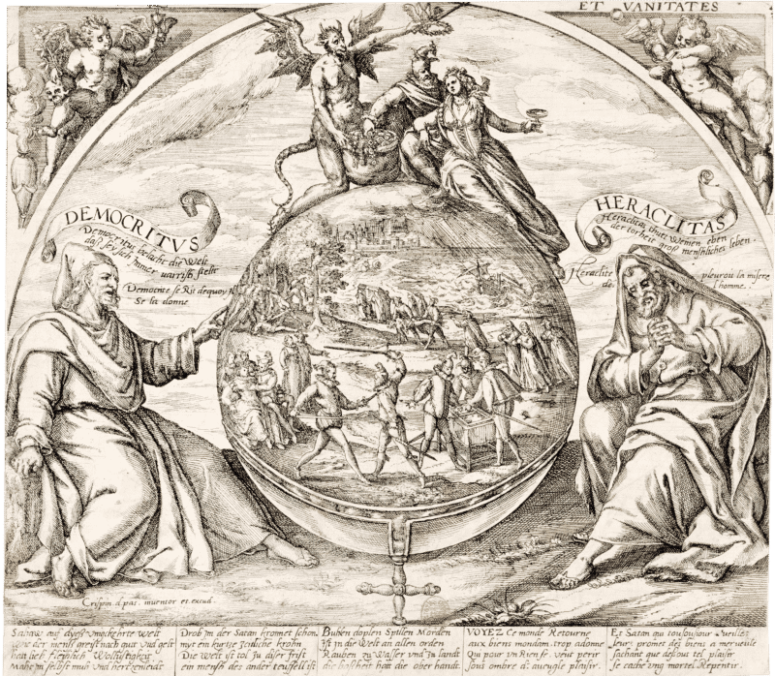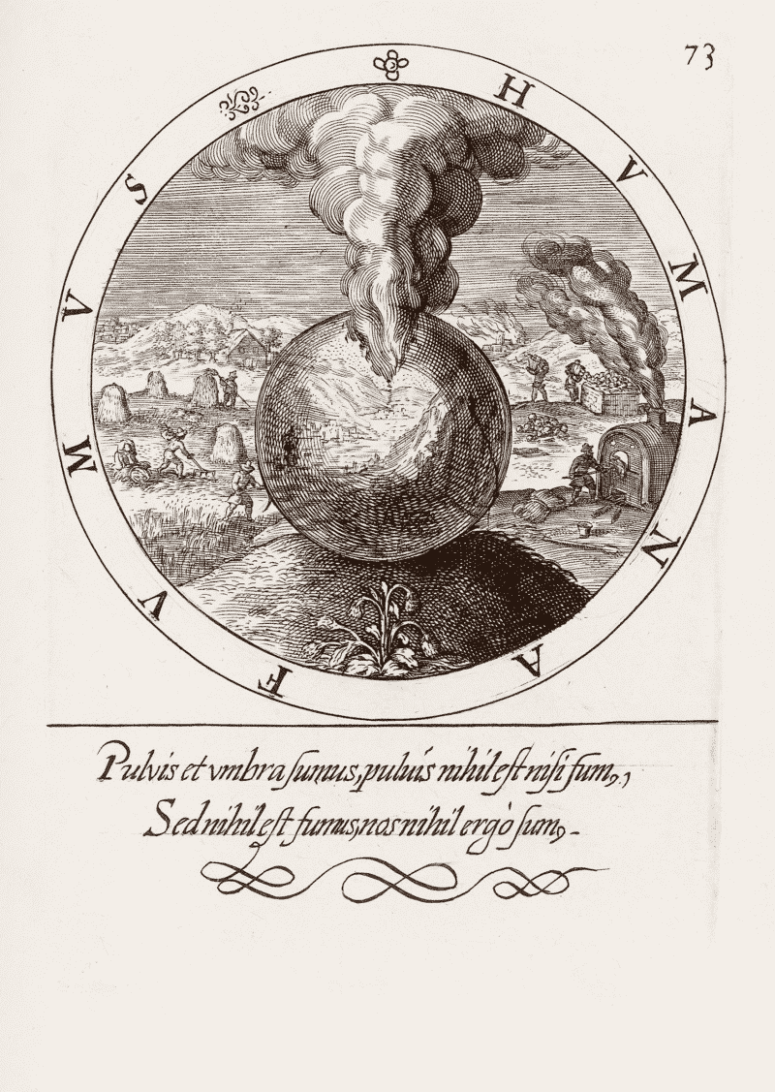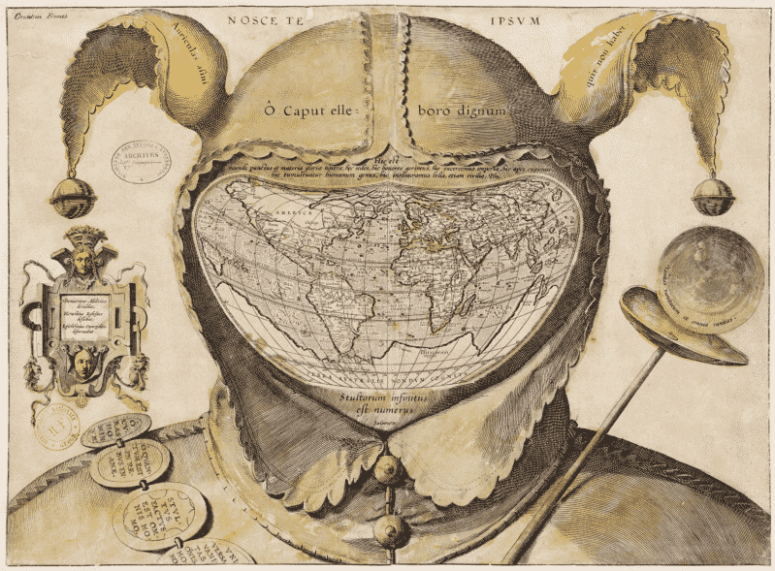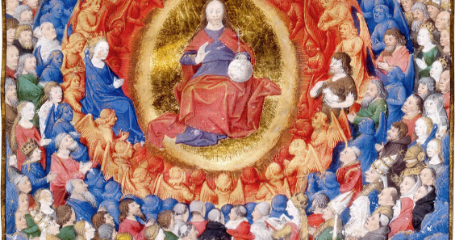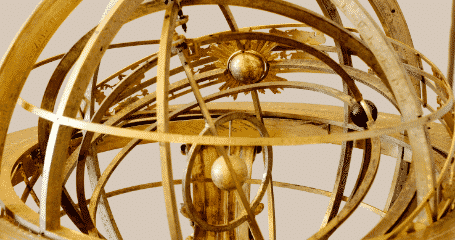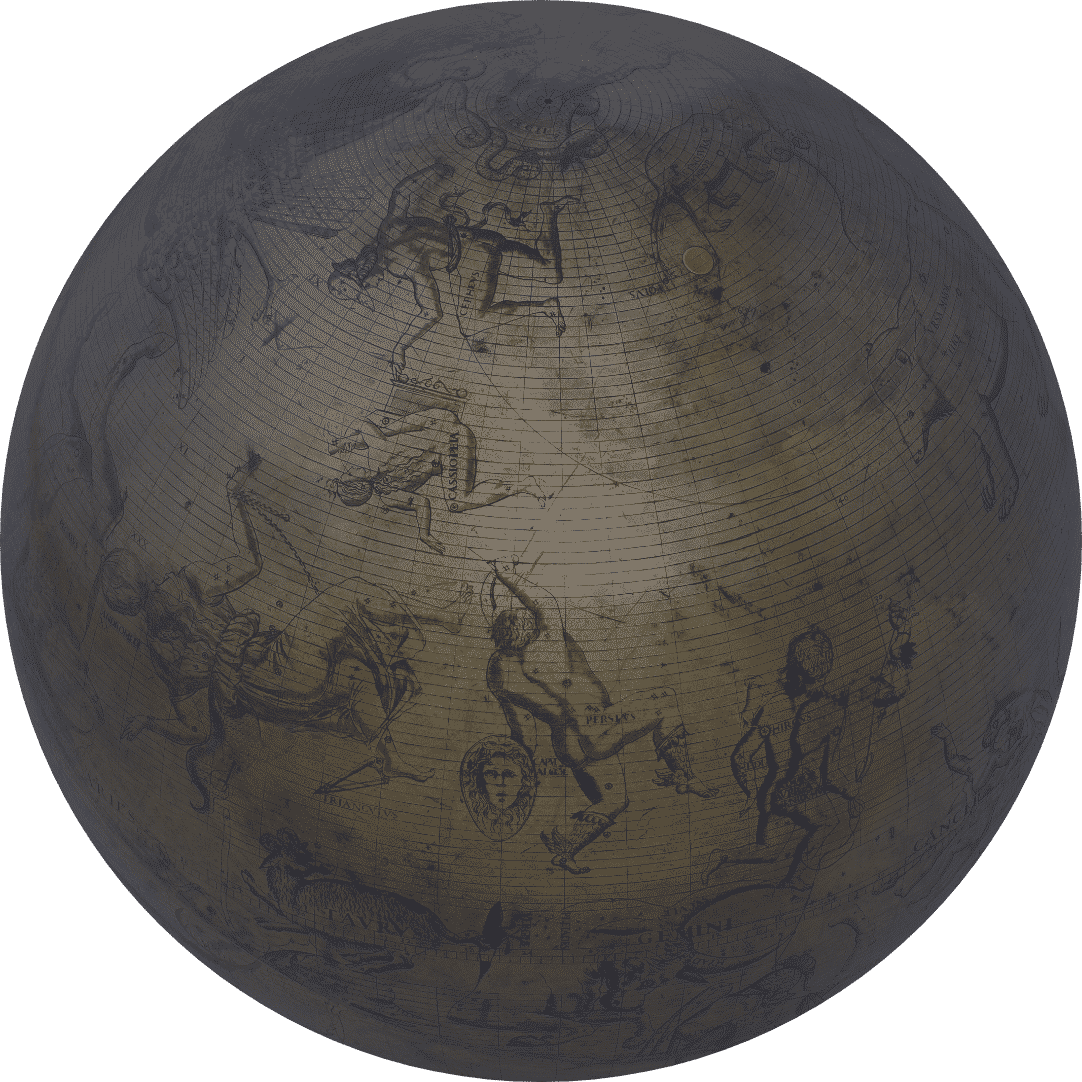
Th triumph
of the globe
During the 15th and 16th centuries, the terrestrial globe affirmed its role as a reduced model of the Earth. The great journeys of discovery and the exploration of new worlds confirmed the Earth’s sphericity and clarified its geography. The geographer’s art, in conjunction with the astronomer’s, laid the foundations for cosmography. The triumph of the spherical model in Europe was incarnated in the shape of pairs of globes – terrestrial and celestial – produced in large numbers thanks to engraving, which was widespread in society. The globe became a polysemic symbol of power, knowledge and the vanity of the world.

During the Renaissance, European navigators explored the world, gradually surveying its outlines and confirming the Earth’s spherical shape empirically. The “artificial globe” of our planet became the vector for spreading this new image of the “terraqueous globe.” It was both a prestigious ornament and an educational tool for schools. Modern Europe’s passion for globes gradually became universal.
Terrestrial globes: witnesses to great discoveries
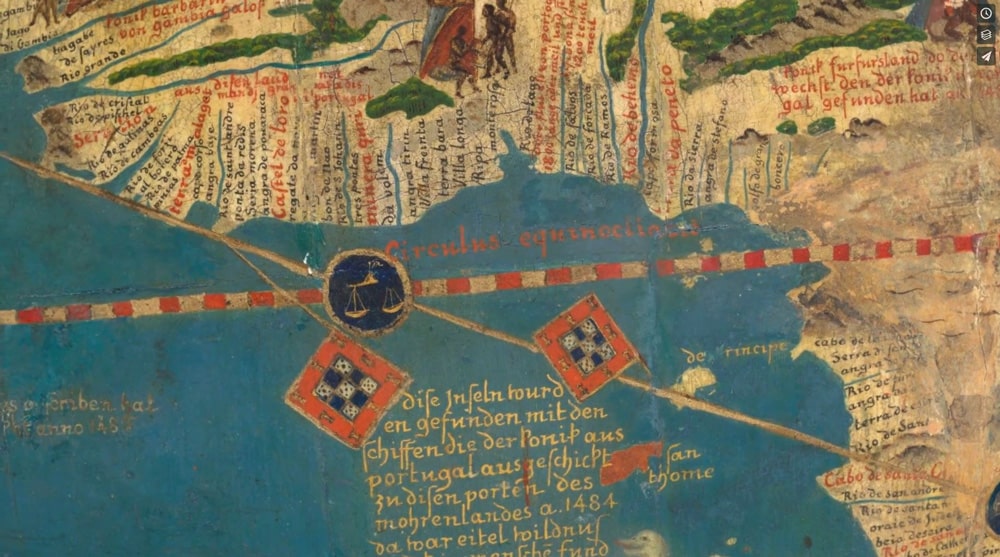
The period of the European Renaissance and the exploration of new worlds confirmed the Earth’s sphericity and clarified its geography. The globe, which could be navigated from one side to the other since Magellan had circumnavigated it, was no longer a matter of speculation. So terrestrial globes began to be produced in ever larger quantities, whether disassociated from or paired with celestial ones. Globes became tools for explorers and navigators, as well as a way of presenting the new discoveries that shattered the limits of the ancient ecumene.
Globes represented a perfect, un-deformed state of the sum of ancient geographical knowledge and new discoveries. Hence we can see, on the hand-drawn globe known as the “Green Globe,” from 1506, the earliest representation of the Americas, in the shape of a single continent called “America.” It had still been missing from Martin Behaim’s great globe, made in 1492. By the same token, Fernand de Magellan’s circumnavigation of the Earth (1519-1522) was retraced on both the “Golden Globe” (circa 1535) and Battista Agnese’s nautical planisphere (1543).
After Portugal and Spain had begun to carve up the world between themselves, France and England sent their vessels to the Americas for a high-stakes economic and political rivalry between the great European powers. The great planisphere (1544) of the navigator Sebastien Cabot, in the service of King Henri VIII of England and later of the Holy Roman Emperor and King of Spain Charles V, offers a perfect portrayal of the situation, which was also illustrated by prestigious globes that were meant to impress, like the “Rouen globe”.
Cosmographers’ knowledge
The geographer’s art, in conjunction with the astronomer’s, laid the foundations for cosmography, a key field of study in the 16th century. Cosmographers – like Gemma Frisius, Peter Apian, and Gerard Mercator – were both humanists and experts in mathematics, astronomy and geography, as well as philosophy and natural history.
They interpreted and connected phenomena observed in the heavens and on Earth. Without breaking from the Ptolemean tradition, they invented new methods, and found innovative ways to produce ever-more sophisticated models of the world, including mechanical ones, like Johann Reinhold’s sphere (1588).
Manufacturing and using globes
in europe
A great number of pairs of printed globes were produced between 1600 and 1700. Most of them were made in Amsterdam and represent the Dutch Golden Age, in the first half of the 17th century. The manufacturing process, which involved using gores (segments with tapered ends) printed on paper, had been invented in the 16th century. It enabled the production of matched pairs of terrestrial and celestial globes.
Although the process was still quite artisanal, it did make it possible to produce pairs in a range of different sizes and prices. At that point, globe ownership started to become widespread throughout Europe, alongside ownership of the bulky atlases sold by cartographers since Abraham Ortelius and Gerard Mercator. Appearing frequently in Dutch genre painting, they were used to teach navigation, as elements of interior decoration, and to flaunt their owners’ interest in the world and science.
Amsterdam’s globe-makers
The industry and marketing of printed globes, culminating with Dutch manufacturers in the first half of the 16th century, popularized these informative objects. There were three rival dynasties of globe-makers competing for custom in Amsterdam: the Van Langrens, the Hondiuses and the Blaeus. As each family boasted that they featured the latest geographical and astronomical discoveries on their globes, they copied each other copiously, even in terms of style.

The model of a pair of globes, one terrestrial and one celestial, in a range of different formats, became the established norm throughout Europe. These manufactured sets came to be the canonical representation of the world.
Exporting the spherical model to the Far East
While long voyages and contact with other peoples expanded Europeans’ horizons and enhanced their representations, those journeys also enabled Europeans to export their knowledge and spherical vision of the world to other continents, particularly Asia, from Turkey to Japan.
The European Jesuit missionaries who went to China in the 16th and 17th centuries played a key role in scientific exchanges between East and West. Their astrological, cosmological, and geographical knowledge spread across China and neighboring countries, like Korea and Japan.
The symbolism of the globe: power, knowledge, and vanity
Bearing a heavy load of knowledge that was constantly being increased and updated, globes – both terrestrial and celestial – came to be familiar items whose representation in the arts was widely varied both in formal terms and in symbolic meaning. Power, knowledge, vanity of the world and of human achievements: the globe came to include a broad semantic field. This was also true of armillary spheres. Although far less common – some of them were veritable mechanical gems – they rendered the arrangement of the principal spheres in the great celestial and cosmological mechanism, including the Earth and the fixed-star sphere.
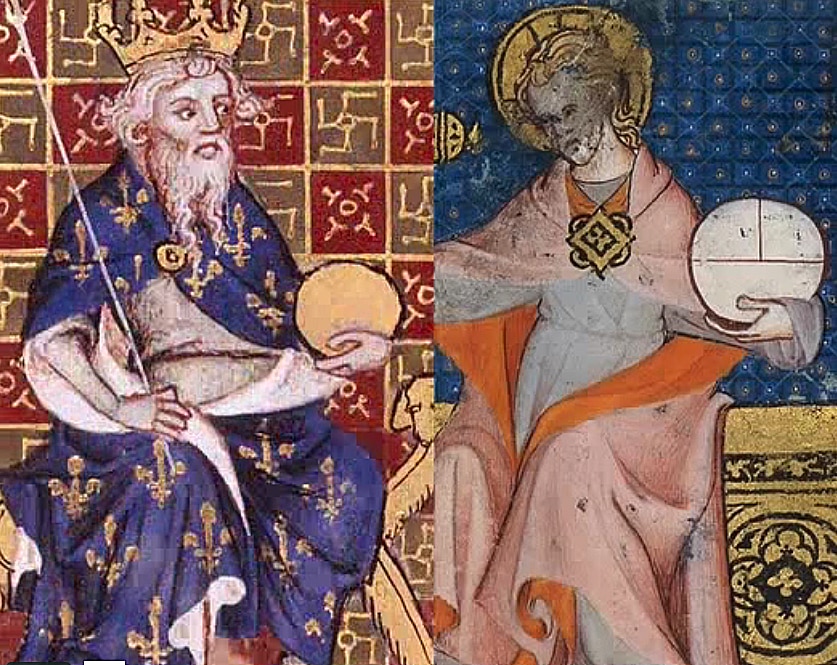
In the late 17th century, the excess of the huge Coronelli globes given to King Louis XIV incarnated both the triumph and the limitations of a cumulative, encyclopedic model that was constantly being enhanced with information and symbols that were often already outdated by the progress of science at the dawn of the Age of Enlightenment.
Coronelli’s Globes
These globes, created in 1683 by the Venetian cosmographer Vincenzo Coronelli, were a gift for Louis XIV from Cardinal d’Estrées. They provided a summarized representation of the Earth and the Heavens. At once objects of science and emblems of power originally intended for the Château de Versailles, these globes of exceptional dimensions (over 2.3 tons each, for 4m (13 feet) in diameter), can now be admired in the western wing of the BnF.

The terrestrial globe is fascinating for the wealth of information and the diversity of oceanic and terrestrial scenes portrayed: some mythical, some exotic, others technical. The celestial globe, which shows the positions of the planets on September 5, 1638, the day that Louis XIV was born, includes more than two thousand stars grouped into 70 constellations, as well as several novae observed since 1572 and nearly a dozen comets.
Globes as symbols of power
In continuity with Antiquity and the Middle Ages, orbs remained symbols of sovereign power: their use spread from emperors to numerous monarchs, in Spain, England, France and elsewhere.
Adopted by a great many Christian kings, the globus cruciger (or “orb and cross”) would never become one of the insignia of royal power in France. Nevertheless, the court’s iconography would borrow heavily from the symbolism of spheres to celebrate the power of the Kings of France, with images such as Henri IV astride the globe and Louis XIV as Apollo. Certain ministers also seized on globes, both as symbols of power and of the burden of their responsibilities. Hence Colbert was painted with a pendulum adorned with Atlas carrying the sphere of the world.
Globes as symbols of knowledge
As models of the heavens, the earth or the entire cosmos, spheres came to be synonymous with knowledge. They were associated with the people, places, and achievements that celebrated or protected the arts and sciences. As reduced models of the universe, globes incarnated the aspiration to universal knowledge. Found in cabinets of wonder, libraries, and allegories of the arts, they also became fixtures in portraiture as the emblem of astronomers, geographers, and all those who devoted themselves to the arts and sciences.
Globes as symbols of the vanity of the world
Spheres’ positive image soured in the 16th century with the schism in western Christendom and the Wars of Religion. Aristotle’s distinction between a perfect, immutable “superlunary” (beyond the Moon) world, and the “sublunar” world doomed to impermanence, found a powerful echo in Northern Europe. Memento mori, images of the “world turned up-side down” books of emblems, and paintings of vanities all invited the wise to distance themselves from riches, illusions of power, and pretentions to knowledge

